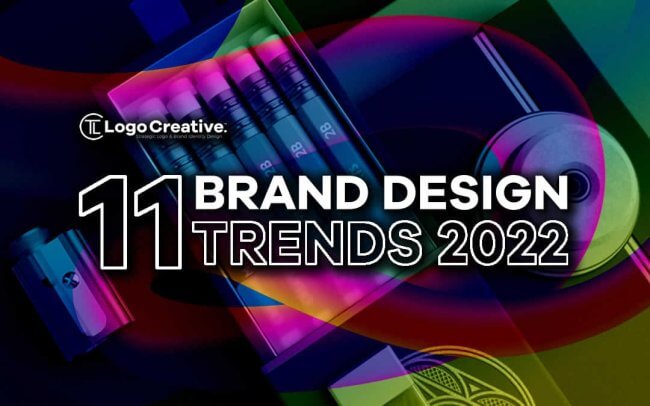In today’s world building a brand is the ultimate key to the success of a business. Let’s take a look at the Top 11 Brand Design Trends We’ll See in 2022
Good branding provides a business with a unique personality where consumers can connect with an emotional response this also will help the brand engage with its audience and in turn help
promote and sell its products and services.
Branding combines a range of elements also known as brand touch points that create the overall brand experience, such as tone of voice, touch, smell, interaction, process, colour, type, brand story etc.
It’s good branding that forms an everlasting impression for consumers, it then differentiates a business from its competitors.
By executing the right brand strategy, a business can foster loyalty between its brand and consumers.
It’s important to remember that branding is not static and never remains still as it’s constantly shifting and responding to the industry’s desires and needs of its consumers.
In 2022 it’s going to be interesting to see how the pandemic, political movements and the impact of climate change have affected the way people interact with brands.
Let’s now jump in and see the Top 11 Brand Design Trends We’ll See in 2022.
Table of Contents
Immersive Brand Experiences
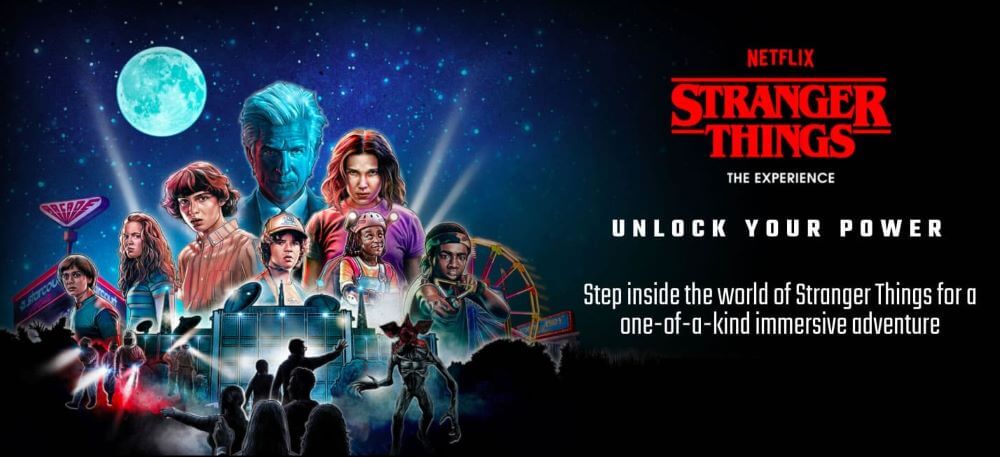
As the innovation trend is shaping up to be an essential part of brand storytelling, a rich brand experience is all about welcoming your audience to your world, inviting interaction, and creating a community that is connected and engaged with your brand experience.
It could take place through a themed event, designing an online gaming experience or interactive experience, or taking product packaging to a whole new level to create an unparalleled experience for consumers.
There is no question that immersive brand experiences are going to be on the rise in 2022 and becoming more popular in the future.
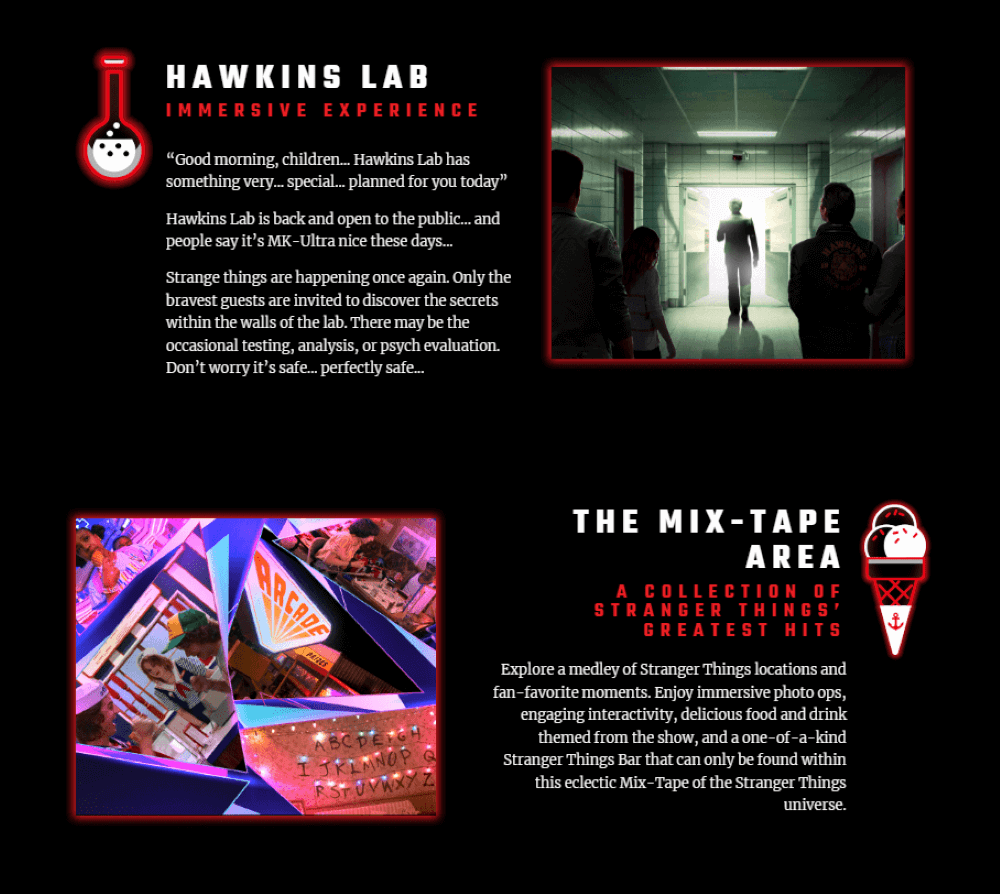
A good example is the Stranger Things Immersive Experience that’s located in New York and San Francisco. It places fans of the show directly within the Hawkins Lab that is a feature of the show.
It invites fans of the show to discover secrets hidden within the walls of the lab, this experience will be remarkable for its fans and this interactive experience will further solidify their connection to the Stranger Things brand.
Brand Activism
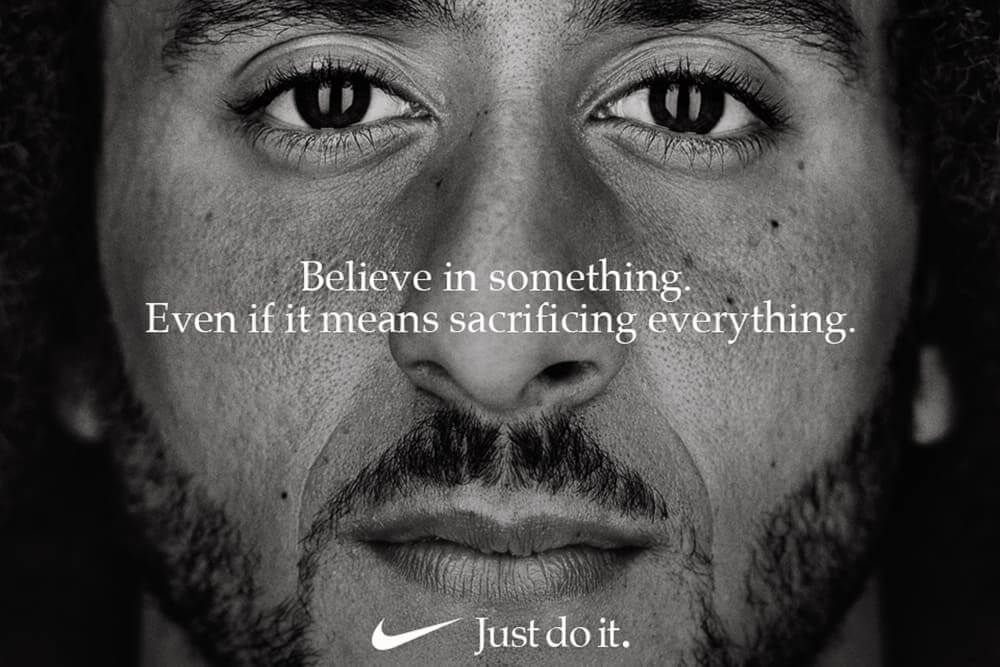
Brand activism is not a fly by trend, it’s here to stay by openly showing your feelings and emotions and showing you’re committed to things you believe in rather than saying you’re in favour of something, but never doing anything to support it has never been more important.
Consumers are looking to interact with the brands they love and the values they share with those brands.
Brand activism is about communicating commitments to positive change and keeping up with supporting this commitment.
How a brand “fits” your values, beliefs, and lifestyle can determine whether or not you choose to be loyal to it.
The brand’s mission and purpose play a major role in the brands you purchase from and trust.
Consumers have a growing expectation that brands exist for more than just profit.
Consumer values, money and loyalty lies with the brands who advocate, endorse and contribute to the greater good.
By doing this it’s a powerful way for brand consumers to feel like they are playing their part in the journey of the greater good.
Purpose-Driven Campaigns
Speaking of a brand with a mission for the greater good, enabling them to foster deeper connections with its consumers.
In 2022 we will also see more and more brands creating more purpose-driven campaigns.
Consumers become wearier of campaigns that have no-purpose only to drive profit in for the company.
Brands who are taking the time to explain and demonstrate to consumers what and how they plan to make a certain issue better can expect more and more loyalty from consumers in 2022.
Consumers will expect this trend to become a thing for the future as consumers start to choose brands based on their values and beliefs.
For brands to deliver purpose-driven campaigns that will make positive changes, they need to be in it for the long-haul and this will require brands to be genuine and transparent in their approach.
Virtual events
It was not by choice but the pandemic forced not only businesses but also schools and organisations to turn to virtual meetings, classes and events.
It wasn’t all bad as this movement opened up a new opportunity for accessibility and communication, and something that people are holding on to and will be for some time.
Although virtual meetings are not something new, the pandemic has made people more aware and reliant on this technology for the better.
Virtual engagements open up a connection to people all over the world. Brands in particular can use this to better connect and communicate with their consumers world-wide.
It’s clear that during 2022 most businesses, schools and organisations will be operating as normal, but many will still enjoy the home / virtual office experience.
Expect to see more brands adapting to live online events, meetings, and online training and workshops.
Online Communities and Platforms
As we mentioned about virtual events during the pandemic, we understood the importance of human connection and how lock-down restricted this connection in person, putting a wedge between social interaction and community meetups and gatherings.
Brands all over the world started to pay attention to creating their own online communities for their audience as a way of staying connected with each other although not the same as in person engagement creating a good online community is a golden nugget for a brand.
The trend of online communities and platforms will not go out of style anytime soon and will continue to evolve in the future.
Creating one can be as simple as striking up a conversation on social media or engaging in comments on a post, for a more private approach to a simple discord channel, Facebook or LinkedIn group works well.
If you’re looking to take it a step further, there are paid services you can use or the option of developing a bespoke solution to facilitate a sense of community for your brand.
Expect to see more of the online community trend in 2022.
Paid Newsletters
During 2020 we witnessed the rise of Substack, a platform that allows writers to send out a digital newsletter to their subscribers and monetise it through a paywall. We currently use the platform and have no complaints it’s been a joy to use.
A lot of people will be thinking who would pay to receive newsletters as it’s always been free if you subscribe to a particular newsletter in exchange for your email address.
Well, you will be surprised to know that Substack’s top 10 writers generate more than $15 million dollars in revenue each year.
But why the sudden shift to a paid newsletter option? It was down to a number of reasons. Due to the pandemic a lot of people lost their jobs in the media industry.
Substack gives journalists a revenue stream to be independent. There is also a trend around subscription-based content creation with a lot of websites now only available to read if you pay a monthly subscription.
Not everyone will agree with this model and that’s fine, but brands that prioritise exclusive-access to engaging content that is informative for their loyal readers will be just fine with this trend in 2022.
We say good luck to writers who can make it happen!
Mental Wellbeing
With everything that’s happened in the world there is an increasing awareness among brands and customers in both B2B and B2C sectors about mental wellbeing and this trend will increase in 2022.
Businesses will be looking to support and integrate mental wellbeing into their brand’s overall view.
It’s been a growing trend as the pandemic, lockdowns and financial implications have made it an urgent and relevant branding trend to continue in 2022.
Out of the Ordinary Branding
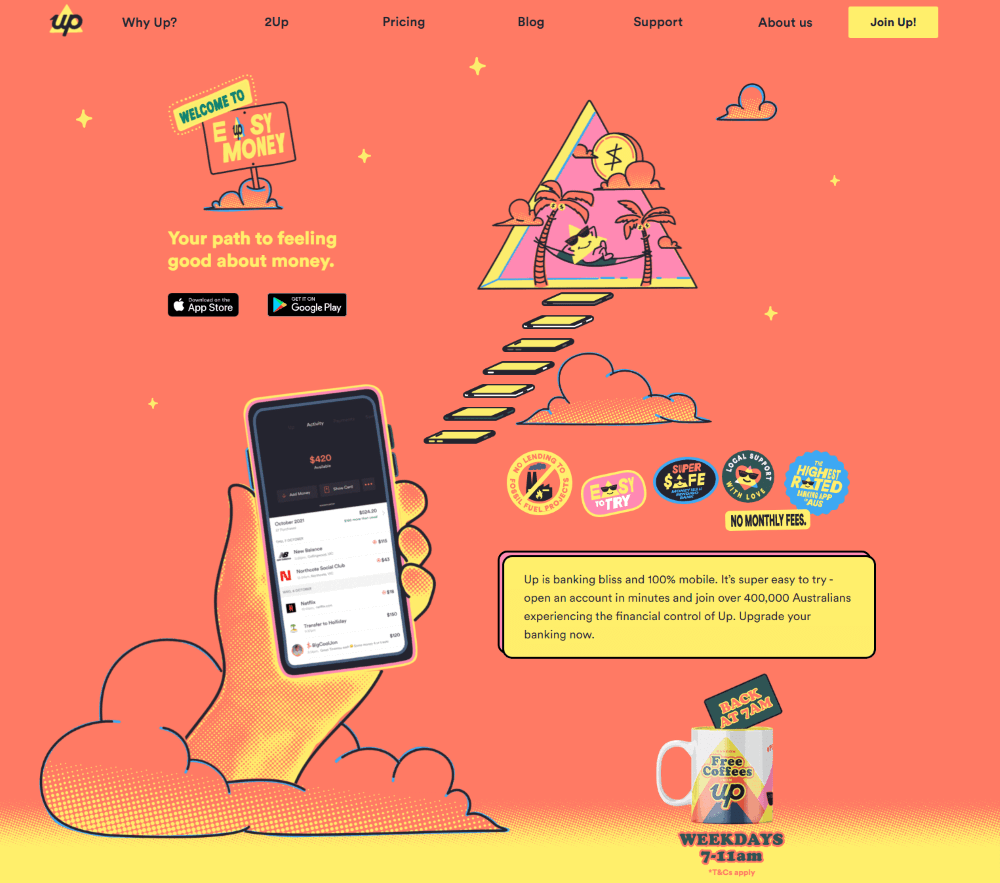
Out of the ordinary branding incorporates a range of elements such as hand drawn illustration, wild colour combinations, chaotic design, overlapping elements etc.
This trend is being adapted by a wide range of brands in different industries that you would not suspect such as health insurance and finance.
This brand trend in 2022 is all about breaking the rules of design and using design elements to create a sense of fun unique individuality.
This trend will feature elements such as fun typography, illustrations, distorted shapes, bright and clashing colour pallets.
Out of the ordinary branding helps brands make bold statements. Not only are they eye-catching and fun, they demonstrate a more accessible and personal brand experience.
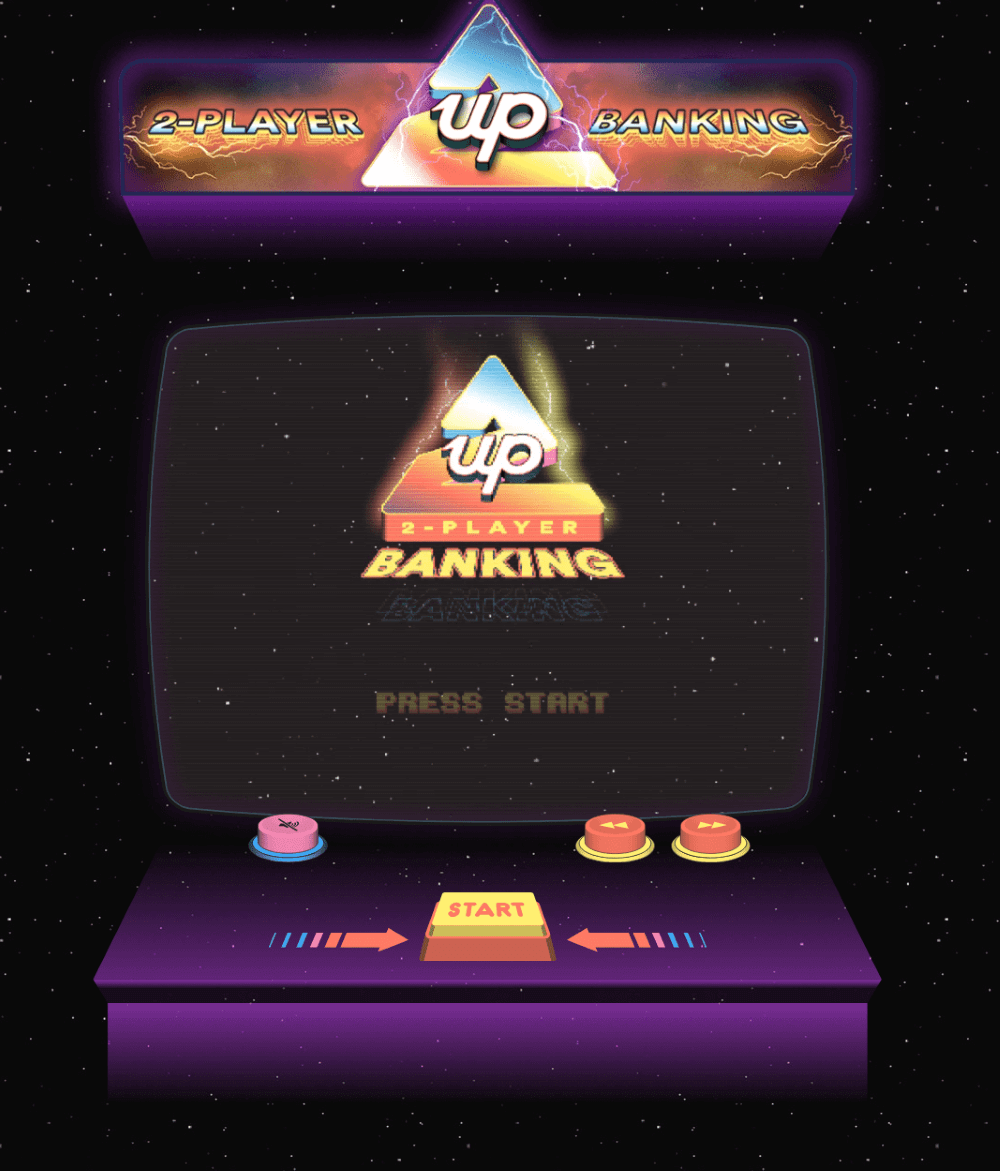
A good example is Up Banking going against the typical stereotypical greys and blues, and corporate look and feel that is associated with banking websites and using out of the ordinary branding which is fun and cool to interact with.
When you view the website, you’re greeted with an 80’s nostalgia feel that continues throughout the site with neon effects, retro inspired gifs, and other cool icons.
Minimalism
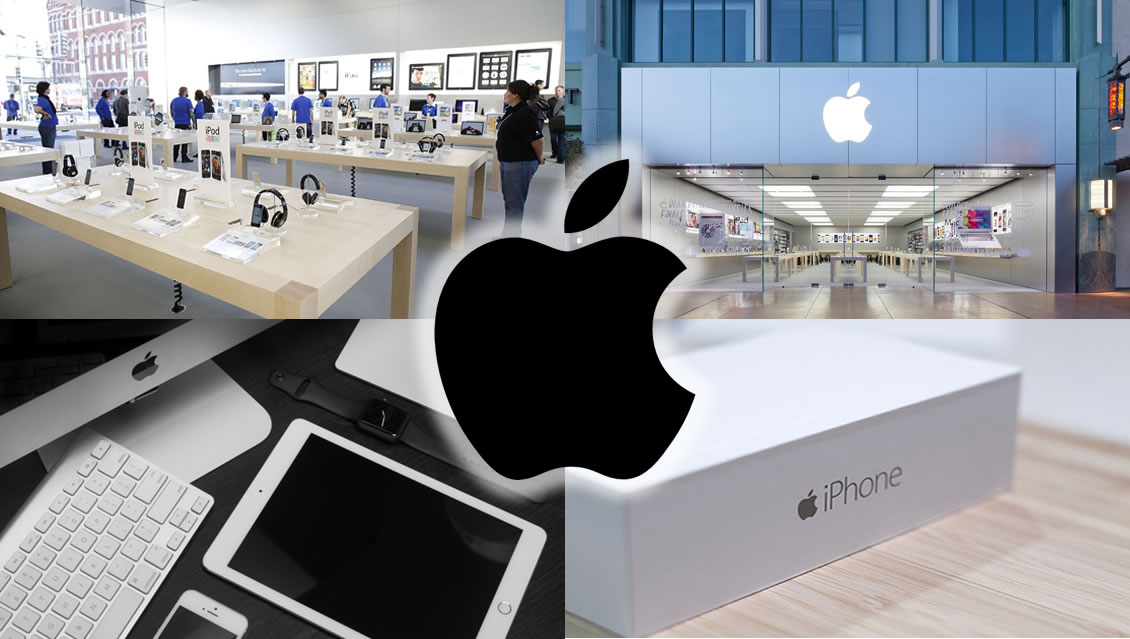
Bringing it down a touch we move on to minimalism, upholding the less-is-more mantra, the minimalism trend involves only using the required elements like basic shapes, limited colour, super clean typography, and empty space.
Minimalism has become more of a principle of design rather than a trend, but due to its popularity we have to mention it.
Minimalism is such a great element of design and branding and can work really well when incorporated correctly.
Minimalism not only refers to design elements but also other brand touch points such as interior design and packaging.
Apple has pulled it off for years with every brand touch point, including their identity design, website, products, packaging and store layout, and they continue to be at the top of the list when gaining inspiration from other brands.
Minimalism is an ongoing brand design trend that we can continue to see on the rise in 2022.
Bauhaus design
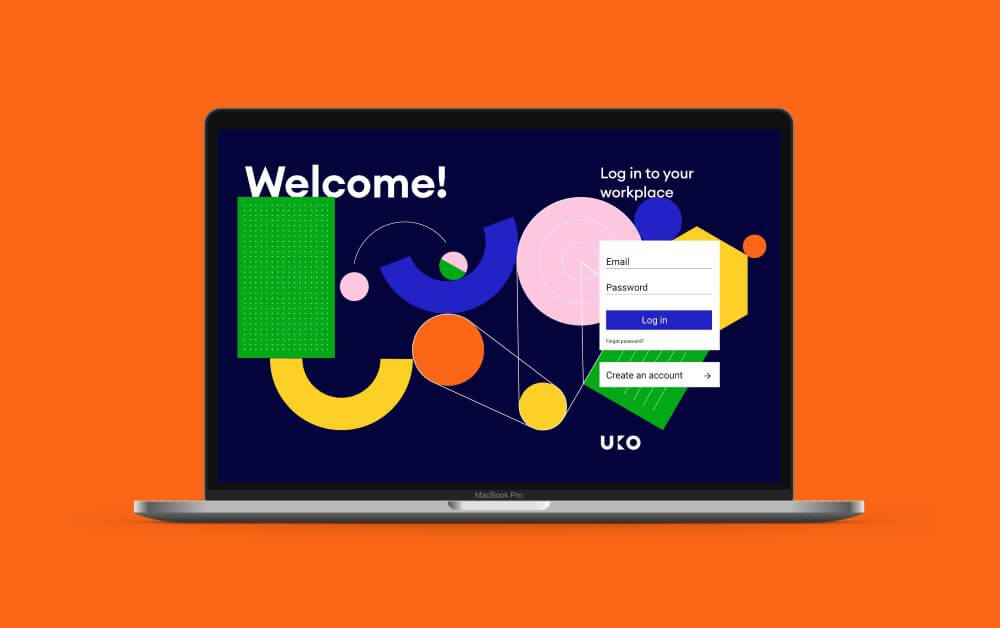
The design trend known as Bauhaus originated in the famous German art school known as Staatliche’s Bauhaus and became popular in the early 20th century.
It combines elements of art and industry, expressed in geometric shapes, clean lines and sharp angles. Based on elements of retro design, the Bauhaus is minimal, modern and functional, making it an ideal versatile direction for brand identity design.
A good example is UKO an online collaboration platform connecting teams and streamlining workflow. Their branding features Bauhaus design elements that include bold shapes, fine lines, and various geometric design elements.
The overall design is very distinctive that’s colourful and eye-catching and memorable with the inclusion of static and animated design. It talks to the viewer signifying connectivity and problem-solving.
Nostalgia
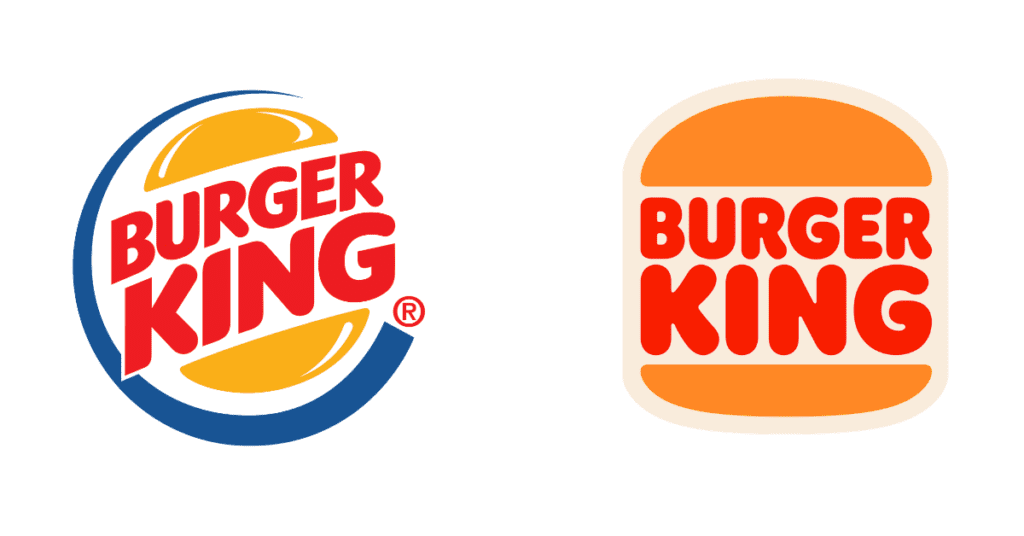
People’s obsession with nostalgia is becoming more and more popular in branding.
The past continues to be a source of inspiration for many brands, by adding a new twist to popular already recognisable symbols and design elements.
Burger Kings’ recent rebrand is a great example of this. It was their first rebrand in twenty years and a throwback to the logo that was used in the 1970’s 80’s and 90’s taking customers back in time for some happy memories.
The creative director of the rebranding project said ““We explored a lot of different design territories, but kept coming back to the brand’s original iconic logo from 1969 and 1994 when Burger King looked at its best.” We can’t agree more, and we love it!
The rebrand consisted of more than just a new logo design, it was a complete visual identity redesign based around the colour palette for their menu items – Burgers, Fires and salad.
This awesome rebrand also includes new restaurant merchandise, packaging, menu boards, uniforms, signage, and décor
We think it looks totally distinctive and very old school!
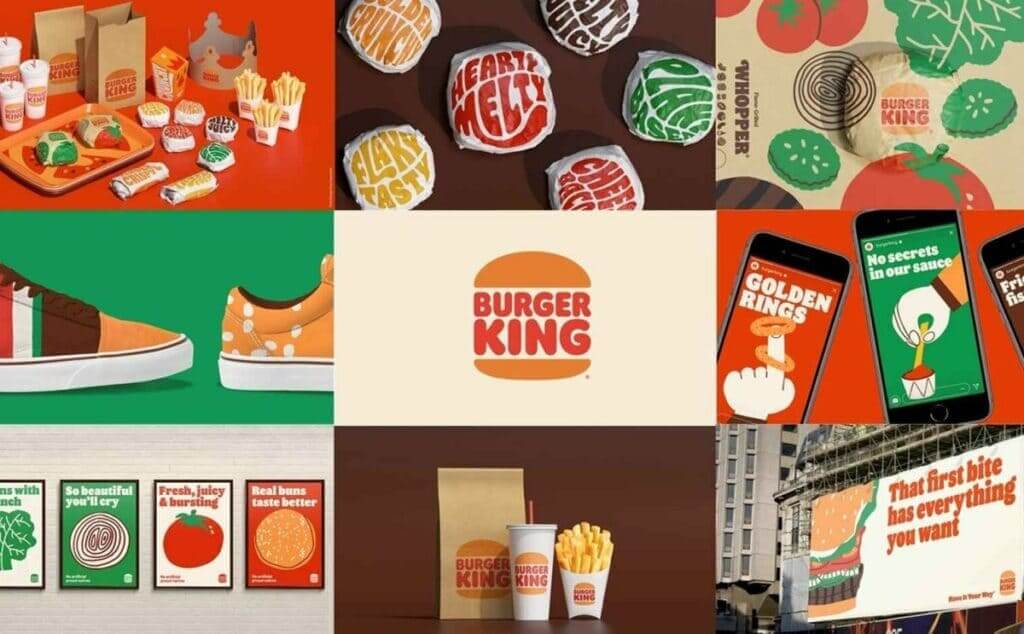
Also, movies, TV shows, marketing materials, branding, and social media feeds have revived references to design elements and pop culture from recent history (i.e., the 1990s and 2000s).
Brands are gaining inspiration by going full steam with bright colours, bold illustrations, sketchy collages, and even as far as using kitschy textures such as foil, plastic, and paper, with lots of inspiration from the super-fashionable Y2K aesthetics for branding.
The nostalgia design trend isn’t new, but it’s exacerbated during the pandemic where people spent most of their time at home working and taking a trip down memory lane by watching their favourite classic movies and TV show series.
Brands are now trying in their marketing to capitalize on our love for all things nostalgic. Nostalgic branding is familiar, comfortable and safe. Who doesn’t want more of that right now?
Expect to see more brands in 2022 opting for Nostalgia branding
Conclusion
Like design, branding trends evolve over time in line with consumer perceptions. But trends do not happen on their own. They are effects in a broader context, sometimes lasting forever.
Moving forward brands now need to be more thoughtful and recognisable in their presentations than ever before.
Using marketing imperfections, advocating diversity across all industries – these have gone from being a trend to a basic requirement that brands must follow to connect with customers.
Want to know the Logo Design trends for 2022? check out: Top 12 Logo Design Trends For 2022
Join The Logo Community
We hope you have enjoyed the Top 11 Brand Design Trends We’ll See in 2022. If you would like more personal tips, advice, insights, and access to our community threads and other goodies, join me in our community. You can comment directly on posts and have a discussion.
*TIP – We use and recommend DesignCuts for all your fonts, mockups and design bundles.

